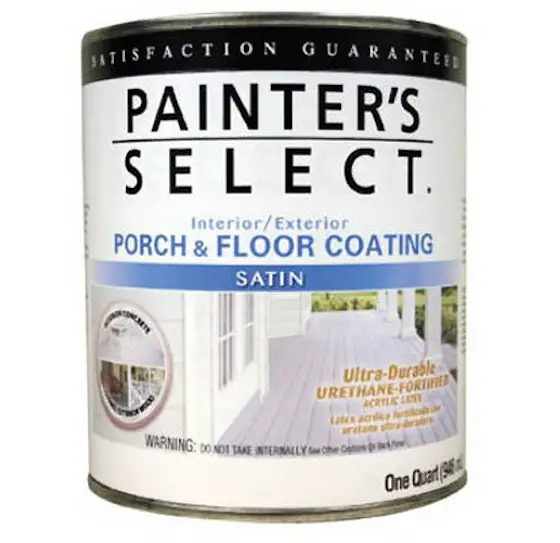Paint Your Aluminum Siding
Painting Your Aluminum Siding
| UPDATE: New information regarding painting aluminum has been added to this column. Be sure to check the Author's Notes following the article. |
The first room addition I ever built was on the west side of Cincinnati. It was a master bedroom expansion.
The existing house had aluminum siding. I was able to get the same siding, however the color didn't match the existing siding. The owner said it wasn't a problem. He suggested that I give him a bid to paint the entire house and the new addition.
I did some homework and found out that you could successfully paint aluminum siding. The job turned out just fine. Two things played an important role: choosing the right paint and getting the siding ready for paint.
Free & Fast Bids
Metal + Paint = BINGO!
Metal is a wonderful surface to paint. Unlike wood, it moves very little. Think about all the metal things you've seen painted:
- cars and truck
- lawnmowers
- wheelbarrows
- tools
- traffic signs
Rarely will you see paint peel from these things unless they're poorly maintained. Paint loves to stick to metal.
Wood Is Hygroscopic
Wood offers tremendous challenges. It can and does absorb water. It's hygroscopic meaning it expands and contracts in response to the amount of moisture in the wood.
The wood itself can change its size dramatically causing the paint film to detach. Metals, including aluminum, do not pose these problems. Metals don't absorb water and they don't expand and contract to the degree wood does. They are a perfect surface for paint.
Why Paint Fades
OK, OK, so the salesman lied. He told you the aluminum siding would be "...maintenance free. You'll never have to...."
Guess what? He was wrong! All paints fade over time.
Sunlight, acid rain, and air breakdown the clear resins that surround the pigment or color particles. This causes the finish to become dull. It also permits the soft pigment particles to be released from the film.
That is what is causing those white stains on your brick!
Not All Paints Equal
Some paints will fade before others. This fading is a function of the quality and quantity of resin in the paint.
The resin is the most important ingredient in paint. It's the glue that allows the paint to stick to things and itself.
There are different types of resin. Two of the most popular are vinyl acetate and acrylic. Acrylic resins cost twice as much as vinyl acetate. They also last longer and are more flexible.
Urethane The Best
In my opinion, the best exterior paints are those that contain urethane resins. You know how sticky urethane is if you've ever applied it to wood. It's almost impossible to remove.
The same urethane resin in paint makes the paint really hold onto anything it touches. opens in a new windowCLICK HERE to get a great exterior paint that contains urethane resin.

Here's a great porch paint you can tint to any color you want. CLICK THE IMAGE TO BUY IT NOW.
Companion Articles: Aluminum Gutters Can Be Painted, Aluminum Siding Painting Tips, Aluminum Siding Paint Manufacturers, Aluminum Siding - Paint and Primer Tips
Author's Notes: The following updated information was received from the Paint Quality Institute. Debbie Zimmer addresses ammonia in latex paints and the resulting bubbling.
"Hi Tim,
Thanks so much for your questions and comments. Regarding ammonia in latex paints, it is so low today that the off gassing (resulting in bubbling) is really not a factor.
Here are a few detailed points to consider:
1. Bare Aluminum: forms a strong oxide layer which is easy to stick to and is relatively inert to ammonia. Some folks confuse ammonia with acid. Yes --- acid will generate some hydrogen gas but there should not be a reaction with ammonia.
2. All Aluminum Siding is coated. This again generally results in a surface that is easy to stick to but for all intents and purposes, relatively inert to water-based paints. Even under poor conditions, incidental exposure to Aluminum should not be a problem because of above (1).
Also, on occasion, we do speak about oxygen bleach but typically use the more common (common to homeowners) "bleach" term. Perhaps we should use oxygen bleach more often. We don't use brand names (in any of our materials), such as Clorox.
Tim, I'm really glad you asked the questions --- it helps us make our educational information stronger.
If you are ever in the Philadelphia, PA area, I would love to take you on a tour of our PQI facilities --- we have over 30,000 paint panels on exposure (a few dating back to the '50's) and 1000's with the most recent and forward looking technologies. In addition, our "farm" contains over 200 different surfaces and substrates (painted/not painted) on exposure as well.
Thanks again,"
Debbie Zimmer
PQI Director of Communications and Alliances
Dow Coating Materials, North America
The Dow Chemical Company
Updated: April - 2017
Column B274